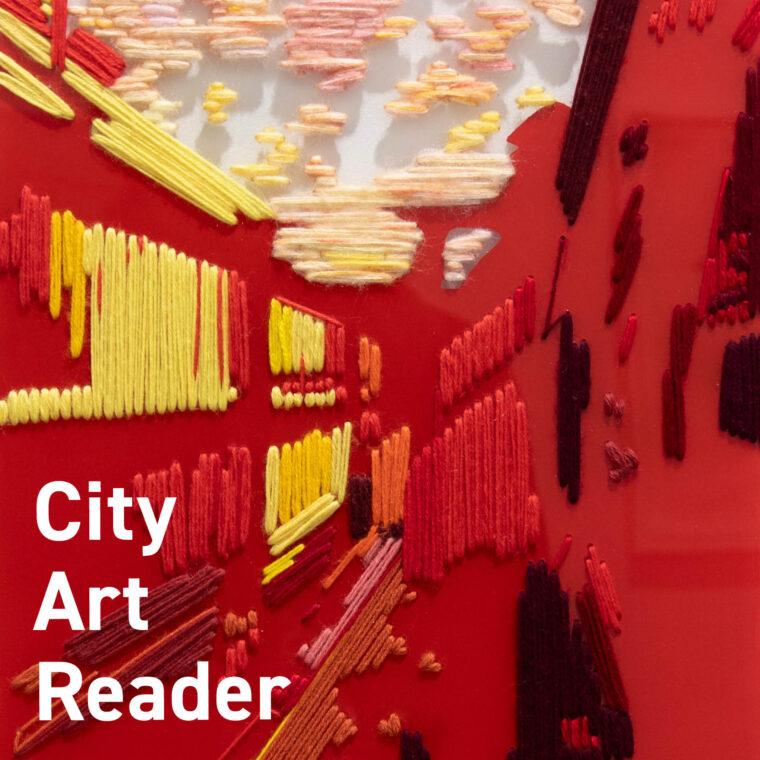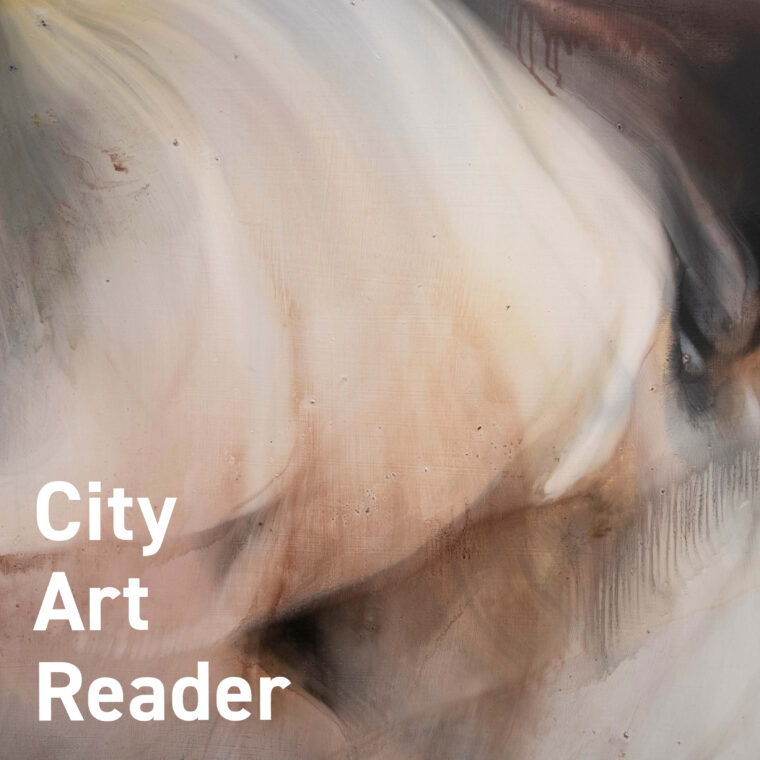Ōtautahi Christchurch-based artist Lucia Sidonio muses on notions of absence and emptiness in her graceful new series of oil paintings. Drawing on Absence by Lucia Sidonio opens 5.30–7pm on Tuesday the 15th of July and runs through to the 4th of August at City Art Depot. Ahead of this she spoke to City Art Reader editor Cameron Ralston at her Masters of Fine Arts studio at the University of Canterbury.

In the Interim, oil on stretched canvas, 250x305mm, 2025
Cameron Ralston: These paintings have a different mood or atmosphere to your previous body of work. Does that tie in with a particular theme or concept that you’re exploring?
Lucia Sidonio: This work is an extension of what I had been painting before. It reflects this idea of absence and presence and how the viewer relates to both what is within the picture and what is suggested beyond. My previous show at City Art Depot looked at depicting the blind spots when looking through the lens of a child, whereas this exhibition attempts to explore absence in a different way. It could be interpreted as absence through loss. The colours and muted tones reflect this in a way.
Previously your obscuring of the faces felt kind of playful, preserving the subject’s innocence. Whereas here the obscuring lends a different feel. Are these images or people related to your personal life?
I’ve often hesitated to create a body of work that is very, very personal. I try to find a way to bridge the gap between what I find interesting, what I personally I respond to, and seeing how that can relate to other people so they can resonate with it. I dealt with loss at a young age as I lost my father at 11. And so, that’s how this theme or these images that I’m making relate to me personally. But I want the images to also be something that other people read into.
Loss and grief are universally experienced emotions. Is there a feeling you’re trying to evoke through the paintings?
I guess the last exhibition was in more of a playful tone, whereas this body of work has a quieter feel to it.
You’ve also used motifs like the empty chair, the empty bed and the tunnel. Are you using these as conceptual symbols?
Yeah, they are symbols in a way. I looked a lot at the idea of doorways as well, like going to and from places. I’m interested in this idea of a void into a work, which sort of fits into that greater theme of loss.

This Magnetic Field, oil on stretched canvas, 350x420mm, 2025
Are the works concerned with the mystery around death and the afterlife?
That’s something that’s always interested me. I’m kind of fascinated by what happens after you die. I’m not of the view that you just die and that’s it. I think that there is intrigue in asking questions around what happens to that person, the soul of the person, when they leave, and then what remains as well.
There is a noticeable variability of texture in your paintings. Is that something that you’ve been developing or is it a resulting part of the process for you?
I’m seeing how I can push things formally. I build up areas to create contrast in the space. In terms of the body of work, this work, This Magnetic Field, really established the show and everything else derived from it. That painting came about quickly and instinctively – I knew exactly what I wanted to do with it in terms of the layering and texturally, when rendering the cast. I’ve built that area up more than anywhere else in the work. I think that was the departure point for using thicker paint in the other works too. That texture creates an important difference between just seeing a photo of the painting or seeing it in person.
Yes, the sensory response to a piece when viewed in person is always so heightened. With photographing a painting you can’t capture the way the eye moves, the depth of colour or the texture. There is a beautiful kind of haze in your paintings and sections where the figurative dissipates. Some sections of your work would be quite beautiful purely as abstracts.
I’ve been told that before. I think it’s nice if you can section off an area and it can still read independently but then also be put together. That’s sort of the aim for the show as well. How the works come together but can be read independently.
Have you always made work that is figurative in nature?
Yeah, I have. I feel like this one, Tether, though could read bit more abstractly. I would be keen to move into creating abstract works.

Mass and Linen, oil on stretched canvas, 555x660mm, 2025
You’re already obscuring somewhat what some elements of the painting could be. For instance, in this work Mass and Linen, it looks as though it could be a coffin, but it could easily be something else.
That painting was derivative from looking at books of postmortem photography from the 19th century, which is kind of haunting but incredibly beautiful at the same time. When looking at the images, I was interested in how these could be read as sleeping figures, rather than people who had passed away. I’m interested in when lines become blurred and how these ambiguities can be described visually.
How does this show work into your current Master of Fine Arts study? What research are you doing? Is there a focus on an ‘influence’ type model?
Yeah, we have to write 10,000 words looking at the research that we’re doing. But I think I’m approaching it in a more process-driven way for the moment. For example, creating this body of work for this show at City Art Depot will inform my next step. I’ve also done a lot of reading of artists interviews. I read one with Luc Tuymans – he was talking about how he aims to create a void into the work, this space or area that draws you in. That resonated with me in a way.
Is that like a literal void in the painting or a sort of conceptual spaciousness that the viewer has to fill in?
Probably a bit of both. In making works which lean towards being more abstract, if you don’t give everything away to the viewer, then they have to piece things together themselves.
I’m interested in this idea of the void and the absence. It’s perhaps like a more challenging way of presenting a scene, because when you’ve got figures in your work, like the previous show, there’s an immediate narrative that you can build. I think these paintings are asking people to look a little more or differently.
I guess there’s only one work which has the full figure in it – Bird of Passage. Like I said before, I’m interested in the idea of entryways. In that work, the figure almost acts as a gatekeeper to the space.

Bird of Passage, oil on stretched canvas, 760x1015mm, 2025
What is it about the entryway that interests you?
It’s like an image within an image. Like you said, if you crop some parts of the paintings, then they can become abstracted. In that painting, you could read the entry as an abstract within the work.
You’ve told me that you can work quickly on a painting to bring it to a conclusion, and you know where you want to go with it. I’m interested in the way that you paint, is it a planned methodical process or is it quite intuitive?
I think the artworks that are probably the strongest come about from being more intuitive and not planning it. I guess I engage with both processes. For example, I might have steps of knowing what colours and compositions I want to use, and it can become a matter of executing it quite quickly. But then equally, that one Tether has been painted over about twenty times and was completely unexpected. I was trying to approach it in a more abstract way.
Your work really shows the working of the painting – you’re not masking the process.
I’m interested in artworks performing as a painting. So, if you can see the gesture and brush mark and some texture to the paint, I embrace that.
You have works of varying size and dimension in the show. How do you approach scale in your works?
I am drawn to painting the subject when it is being rendered close to real life in scale. For example, when I paint figures or hands, I like working with a scale that almost replicates their actual size. This also determines what size canvas I use. If the scene merits being on a larger canvas, then scaling it up to a larger support can sometimes make more sense.

Tether, oil on stretched canvas, 180x255mm, 2025



